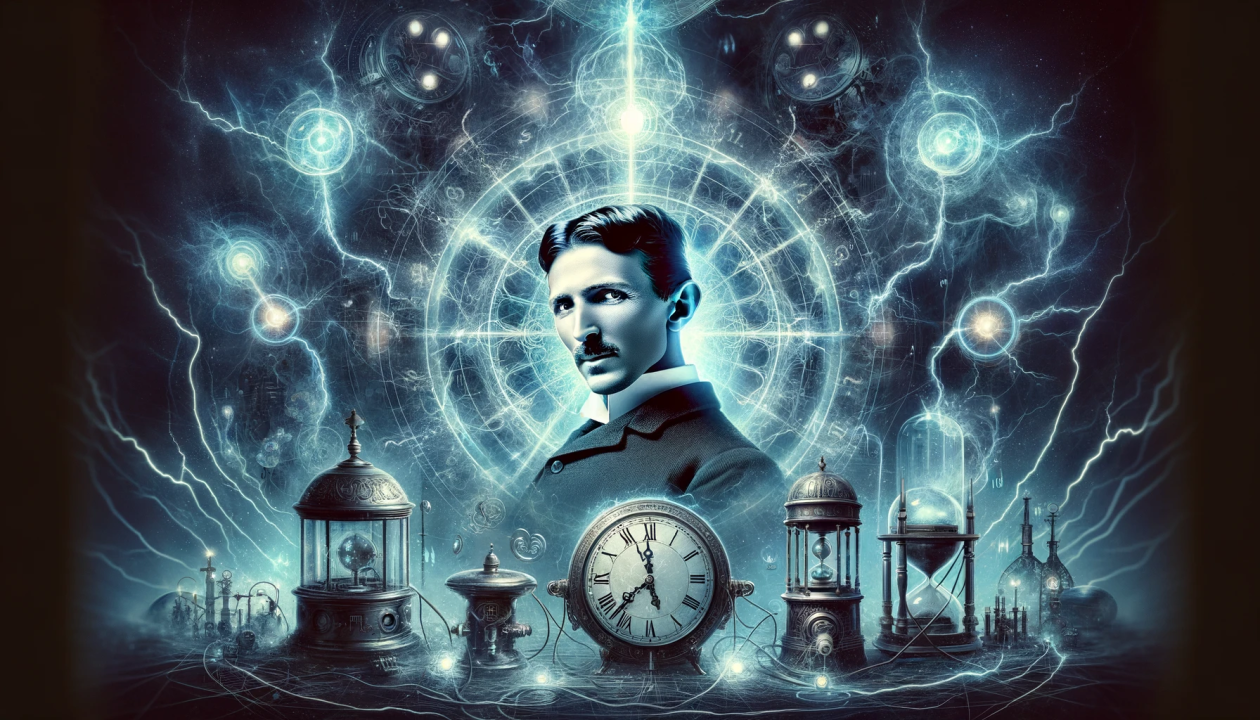Nikola Tesla: The Genius, His Work, and the Popular Conspiracy Theories
Nikola Tesla, a name synonymous with innovation and genius, was an inventor, electrical engineer, and futurist whose groundbreaking work laid the foundation for much of modern technology. Though Tesla’s name is often overshadowed by his contemporary, Thomas Edison, his inventions and theories continue to captivate the imagination of science enthusiasts, technologists, and conspiracy theorists alike. From wireless energy transmission to the elusive “Tesla Death Ray,” Tesla’s legacy is a blend of scientific brilliance and mystery.
In this article, we’ll explore Tesla’s life, his contributions to science, and some of the most popular conspiracy theories surrounding him, including the Tesla Death Ray.
Tesla’s Early Life and Education
Born on July 10, 1856, in what is now Croatia, Nikola Tesla displayed extraordinary intelligence and curiosity from a young age. His formal education began at the Austrian Polytechnic in Graz, where he studied electrical engineering. Tesla’s remarkable memory and ability to visualize complex systems in his mind without drawings set him apart early on. However, despite his intellectual gifts, Tesla struggled with personal demons, including perfectionism and an obsessive work ethic, which would later affect his professional relationships and mental health.
Tesla’s Groundbreaking Inventions
Alternating Current (AC)
Tesla’s most significant contribution to modern technology is the development of the alternating current (AC) electrical system, which became the global standard for power transmission. His AC system revolutionized how electricity was generated, transmitted, and used, allowing for more efficient long-distance transmission of electrical power compared to Edison’s direct current (DC) system. Tesla’s AC motor and transformer designs paved the way for the mass electrification of the world, earning him a place in history as one of the greatest electrical engineers.
Tesla Coil
Another well-known invention is the Tesla Coil, a high-frequency transformer that produces high-voltage, low-current electricity. The Tesla Coil remains a staple in various technologies, including radio, television, and wireless communication. Its dramatic sparks and lightning-like arcs have also made it a favorite in science demonstrations, showcasing the power of electrical resonance.
Wireless Energy Transmission
Tesla was passionate about the concept of wireless energy transmission. He believed that the Earth itself could be used as a conductor to transmit electricity wirelessly across long distances. In 1901, he began building the Wardenclyffe Tower, a massive transmitter designed to send energy and communications across the Atlantic. Unfortunately, the project was never completed due to financial constraints, but it remains a testament to Tesla’s forward-thinking approach to technology.
The Tesla Death Ray: A Conspiracy Theory or Reality?
Perhaps the most intriguing and controversial aspect of Tesla’s legacy is the invention of the so-called “Tesla Death Ray.” Officially referred to as a “teleforce” weapon by Tesla, this alleged invention has been the subject of conspiracy theories for decades. According to Tesla, the device would be capable of shooting down aircraft and disabling enemy forces from miles away using directed beams of energy.
Tesla claimed to have developed the technology in the 1930s, but there is little concrete evidence to support this. Some speculate that Tesla’s plans for the death ray were either destroyed or confiscated by the U.S. government after his death in 1943. Documents regarding Tesla’s work were seized by the Office of Alien Property, further fueling speculation about the existence of the death ray and its potential military applications.
Did Tesla Really Invent the Death Ray?
While no definitive proof of the Tesla Death Ray has surfaced, many conspiracy theorists point to events such as the Tunguska Event of 1908—an unexplained explosion in Siberia—as evidence of Tesla’s weapon being tested. However, this theory remains largely speculative and is not widely accepted in scientific circles.
The fascination with Tesla’s death ray persists because of the inventor’s mysterious persona and unorthodox theories, which often seemed ahead of his time. Whether or not the death ray existed, it’s clear that Tesla’s ideas on weaponized energy were revolutionary, and they continue to inspire speculation and research into directed-energy weapons today.
Tesla’s Impact on Modern Technology
Tesla’s influence on modern technology is immeasurable. Many of his inventions form the bedrock of contemporary devices and systems, from electric power generation to wireless communication. Even technologies Tesla envisioned but couldn’t bring to life, such as wireless energy transmission, are being researched and developed today. Tesla’s work in electromagnetism and energy has made him a hero in the tech world, especially among those interested in renewable energy and space exploration.
Tesla’s ability to dream big and pursue ambitious projects resonates with men today who value innovation, self-reliance, and perseverance. His life is a testament to what can be achieved through curiosity, hard work, and a relentless pursuit of knowledge.
The Myths and Mysteries of Tesla’s Life
In addition to the death ray, Tesla’s life is surrounded by various myths and conspiracy theories that add to his mystique:
- The Philadelphia Experiment – Some conspiracy theorists claim that Tesla’s research was used in the infamous Philadelphia Experiment, where the U.S. Navy supposedly tried to make a ship invisible, with disastrous results.
- UFO Connections – Tesla’s research on wireless energy and electromagnetic fields has also been linked to UFO conspiracy theories, with some claiming that his inventions were inspired by extraterrestrial technology or that he himself communicated with aliens.
- The Tesla Papers – After Tesla’s death, rumors circulated that the U.S. government confiscated his papers, which allegedly contained plans for advanced technologies, including time travel devices and anti-gravity machines. While these claims have never been substantiated, they continue to fuel the mythos around Tesla’s genius.
Conclusion: Tesla’s Enduring Legacy
Nikola Tesla was a man ahead of his time, a visionary whose ideas continue to shape the world. His innovations in electricity, wireless communication, and energy transmission have impacted every corner of modern life. While Tesla’s life was not without its controversies, his genius is unquestionable.
The fascination with Tesla’s work and the conspiracy theories surrounding him show no signs of fading. For men who value independence, ingenuity, and a fearless approach to tackling challenges, Tesla serves as a role model of what it means to push boundaries and defy conventional limits.
To explore more about Tesla’s work and life, check out the following resources:
- The Tesla Memorial Society of New York
- Smithsonian: Nikola Tesla’s Visionary Ideas
- National Geographic: Nikola Tesla’s War of the Currents
References
- “Nikola Tesla.” Britannica, https://www.britannica.com/biography/Nikola-Tesla.
- “The Tesla Death Ray.” Tesla Universe, https://teslauniverse.com/nikola-tesla/articles/death-ray.
- Tunguska Event and Tesla. Wired, https://www.wired.com/2008/06/dayintech-0628/.
- “Who Was Nikola Tesla?” Tesla Society, http://www.teslasociety.com/biography.htm.





